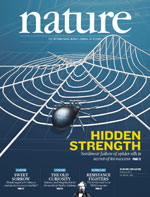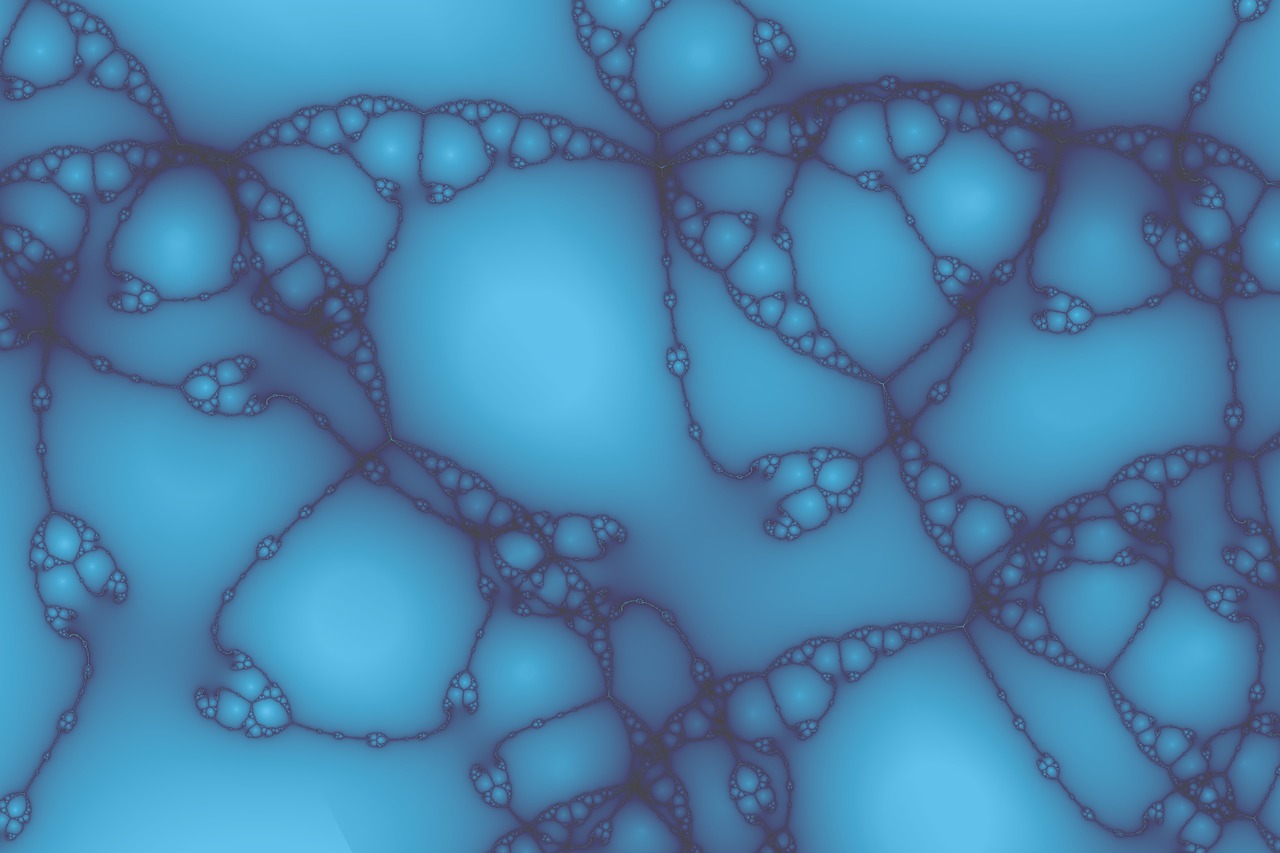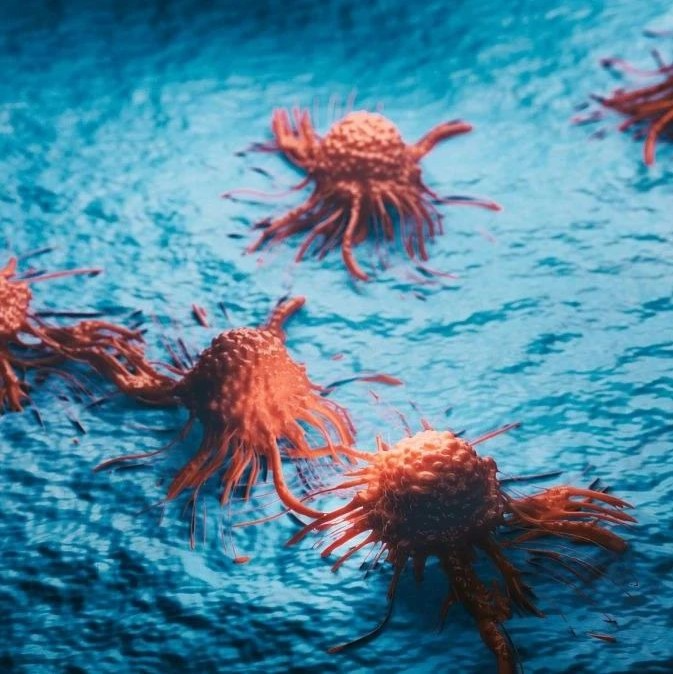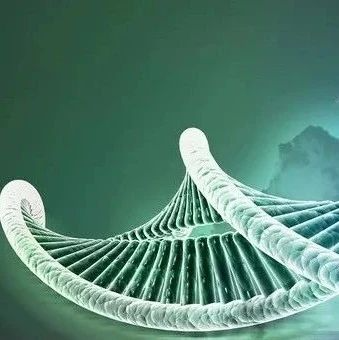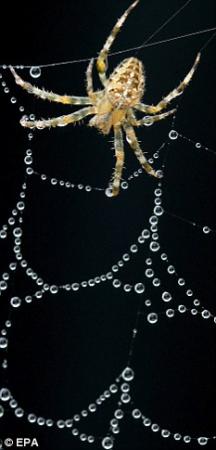
蜘蛛网的质地之所以会如此坚韧不是因为丝有非凡的弹性,而是因为其巧妙的设计
据国外媒体报道,蜘蛛网比钢还坚韧,这简直是一个自然奇迹。现在美国麻省理工学院的一个科学家小组揭示为什么蜘蛛网如此有韧性,可以禁得起飓风的狂吹和捕食者的猛烈攻击。科学家或将利用蜘蛛网坚韧的特性设计可抗飓风和地震的未来建筑物。研究报告发表在最新一期的《自然》杂志上。
研究表明,蜘蛛网的质地之所以会如此坚韧不是因为丝有非凡的弹性,而是因为其巧妙的设计。美国麻省理工学院的研究人员说,蜘蛛网最重要的特性是能够保持完整,丝线断裂后可变得更坚韧。他们说,这些发现可用于帮助设计安全的建筑物,甚至一种牢不可破的新型材料。
蜘蛛需要耗费巨大的能量才能成功编织一个完好的蜘蛛网,因此蜘蛛网包含了一系列的功能,无需做重大修理。研究人员发现,蜘蛛丝本身可自动软化或变硬,以承受负载在它上面的不同类型的物体,不同于其它任何天然或人造的纤维。对其它三种材料制成的类似网的材料进行测试,在遭受掉落的树枝或狂风破坏时,蜘蛛丝具有的弹力要大六倍。
当蜘蛛丝的一根丝被弄断了,蜘蛛可以做小修小补,而不是从头开始修补。从各个区域去除10%的丝线,蜘蛛网的韧性不但不会削弱,反而会增强10%。该研究报告的合著者马库斯•比埃勒(Markus Buehler)说:“蜘蛛网真正坚韧的部分不是丝,而是其机械性能如何随着张力而改变,这是一个井然有序的内置的功能。”
科学家已经证明,蜘蛛丝为何比同等重量的钢的强度大五倍。蜘蛛丝包含两种类型的丝,一种是来自中心的坚硬、干性的丝,可将所有的丝凝聚在一起;另一种是更细更有粘性的丝,用于捕获猎物。科学家还发现这两类蛛丝都可以离开原来的位置而不折断,所以仅有一根丝会折断。俄亥俄州阿克伦大学的生物学家托德 A.布莱克利奇( Todd A. Blackledge )没有参与这项研究,他说:“蜘蛛网为蜘蛛成功捕获猎物发挥了重要的作用。丝在冲击下拉伸,抱住昆虫,所以它不容易逃脱。”
比埃勒建议,工程师可以将蜘蛛丝的构造原理应用到其它方面。蜘蛛丝在受到破坏时只受很小的损坏、而不影响整个结构这一特性可以应用于设计虚拟网络,如互联网,在遭受攻击期间只有本地节点被破坏,而整个系统可继续运行。了解其微观的蛋白质结构和其宏观性质,可能有助于将碳纳米管串在一起,可能有一天会用于生产太空电梯。

Nonlinear material behaviour of spider silk yields robust webs
Steven W. Cranford, Anna Tarakanova, Nicola M. Pugno & Markus J. Buehler
Natural materials are renowned for exquisite designs that optimize function, as illustrated by the elasticity of blood vessels, the toughness of bone and the protection offered by nacre. Particularly intriguing are spider silks, with studies having explored properties ranging from their protein sequence to the geometry of a web. This material system, highly adapted to meet a spider’s many needs, has superior mechanical properties. In spite of much research into the molecular design underpinning the outstanding performance of silk fibres, and into the mechanical characteristics of web-like structures, it remains unknown how the mechanical characteristics of spider silk contribute to the integrity and performance of a spider web. Here we report web deformation experiments and simulations that identify the nonlinear response of silk threads to stress—involving softening at a yield point and substantial stiffening at large strain until failure—as being crucial to localize load-induced deformation and resulting in mechanically robust spider webs. Control simulations confirmed that a nonlinear stress response results in superior resistance to structural defects in the web compared to linear elastic or elastic–plastic (softening) material behaviour. We also show that under distributed loads, such as those exerted by wind, the stiff behaviour of silk under small deformation, before the yield point, is essential in maintaining the web’s structural integrity. The superior performance of silk in webs is therefore not due merely to its exceptional ultimate strength and strain, but arises from the nonlinear response of silk threads to strain and their geometrical arrangement in a web.
文献链接:https://www.nature.com/nature/journal/v482/n7383/full/nature10739.html

